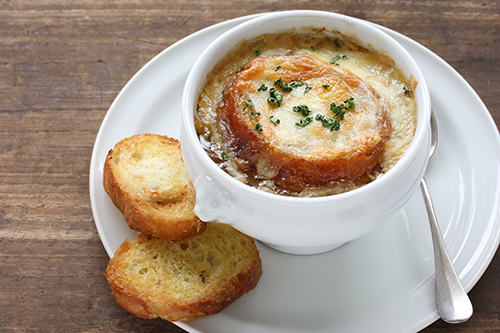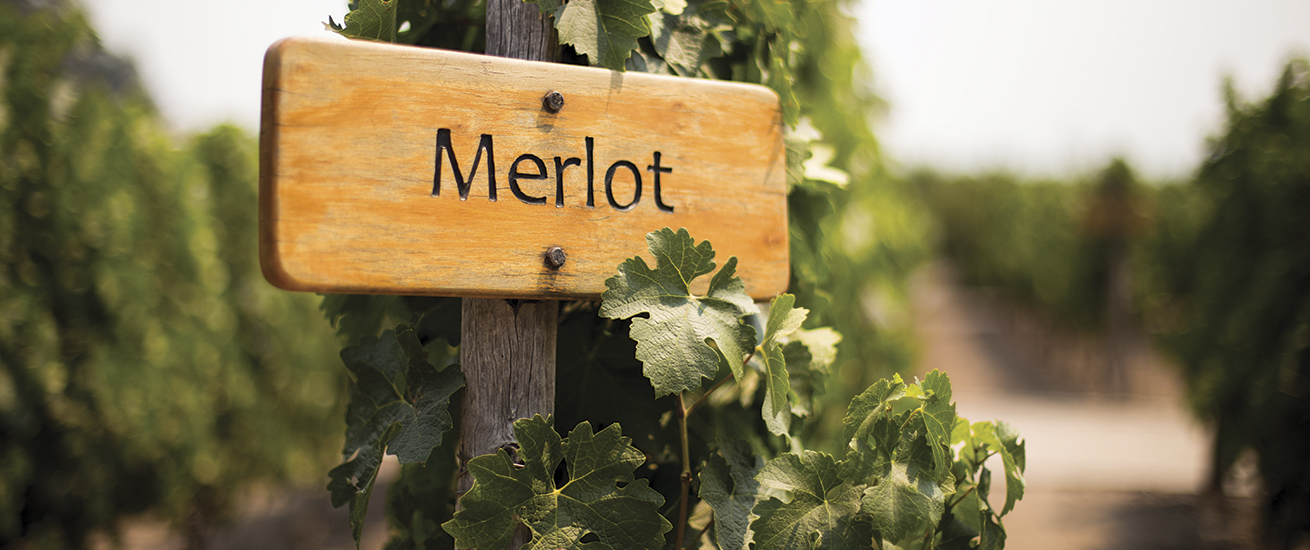Getting to Know Merlot
The Little Black Bird
Recalling the movie Sideways of 2004, Merlot got quite a knock-down on screen in favor of its cousin, Pinot Noir, when character Miles retorts he will be leaving the party if anyone orders (expletive) Merlot! Around the world it seemed Merlot took a back seat to its big brother, Cabernet Sauvignon, who often stole the show in the blended wines of Bordeaux. This unsung hero of grapes commands a bit more respect, however and is is absolutely a first-class varietal that can stand on its own quite nicely!
Merlot is a dark thin-skinned grape that is most classically used as a blending grape in the wines of Bordeaux. It is the most planted grape variety in France and the second most widely planted grape varietal in the world. It is an offspring of Cabernet Franc and Madeleine Noire des Charentes, the latter being a variety that is near extinction, and has found its place in Italy, Romania, Chile and the United States, notably Washington State and California.
Merlot is known for early ripening and large bunches and regulating crop size is the key to affecting the best quality for this variety. The type of soil and terroir where Merlot is grown is also a very important component in determining the quality of the wine. In conditions that are too warm, Merlot can often turn sluggish and flabby. In places that are too cold, the grape can sometimes be set with mildew and rot. The success to growing good quality Merlot is dependent on choosing locations that allow for slow ripening and then harvesting the grapes before its acidity declines.
“Merlot is the perfect wine for any time”, says Don LaBorde, winemaker at Paraduxx Vineyards, and it’s marvelous comeback is in full swing. During the month of October, Merlot receives worldwide recognition with its own namesake celebration called International Merlot Month. This movement brings together Merlot wine lovers from around the world to honor this versatile, lush and opulent red grape varietal.
Be one of the hundreds of producers, wine merchants, restaurants and wine lovers to taste and toast online, at events, in wine stores, restaurants and homes around the world. The hashtag designate for International Merlot Day social media participation is #MerlotMe. More information about how to be a part of the Merlot Movement can be found at merlotme.com.
get the dirt
Understanding terroir and its influences
Merlot grows most lusciously in its homeland of Bordeaux on the Right Bank of the Gironde River. It performs best in soil that is rich in limestone and clay. Limestone soil contains calcium carbonate which helps retain moisture during dryer vintages and offers good drainage in more rainy years. The calcium also adds pH and other mineral elements to the soil. In time, limestone degrades and develops into clay.
There are several other considerations that create the special terroir and growing conditions of Bordeaux including the maritime climate with its particular exposure to sunlight, the diurnal shifts in temperature, the elevation, natural drainage and access to water. Similar to Bordeaux, California and parts of Washington, seem to have the perfect balance of a moderate, dry growing season with similar soil profiles and growing conditions where Merlot can shine.
The success to growing good quality Merlot is dependent on choosing locations that allow for slow ripening and then harvesting the grapes before its acidity declines. In conditions that are too warm, Merlot can often turn sluggish and flabby. In places that are too cold, the grape can sometimes be set with mildew and rot.
swirl, sniff, sip, savor
How to identify Merlot in the glass
There are several reasons to love Merlot and it’s often described as being a crowd pleaser or “easy drinking” wine. It is a lovely medium-bodied wine with a lush mouthfeel. With juicy flavors of cherry, plum and chocolate it is often more soft and supple with less tannin and a bit more acid structure than it’s bolder brother Cabernet Sauvignon. But, Merlot’s soft fruit flavors allow the grape to taste great at a much younger age holding the varietal in higher esteem to wine drinkers as opposed to wine collectors.
There’s a bit more to Merlot, however, than juicy fruits, easy tannins and a soft finish. Merlot can also vary in profile depending on how it is produced and where it is grown. In other words, the grape has slightly different characteristics based on the region where it flourishes. Merlot grown in a cooler climate like France, Italy and Chile will be more structured with a higher presence of full-bodied tannins, minerality and earthier flavors like tar, licorice and tobacco.
Cool climate Merlot is often mistaken for Cabernet Sauvignon. In tasting, look at the color in the glass. Merlot typically tinges orange around the rim which is the telltale sign of the wine being Merlot vs. Cabernet Sauvignon.
Merlot grown in warmer regions like California, Australia and Argentina will be much more fruitforward delivering nuances of berries and juicy cherries. The tannins may be more silky and silky with dusty notes of nutmeg and clove and an undertone of black spice.
What’s in a glass
Would wine in any other glass smell as sweet?
Merlot is best enjoyed in a Bordeaux wine glass with a larger bowl shape which is ideal for a full-bodied wine. The generous size of the glass allows for proper aeration of the wine delivering more aroma compounds to the nose. The bouquet of the wine can fully develop and and the shape of the rim directs the flow of the wine to the front of the palate to enhance the fruit-forward flavor and soften any bitter tannins offering a smooth taste.
pair Merlot like a pro
Merlot has a lot to offer the palate and is quite complimentary with many dishes. Nice pairings with this varietal are perhaps a half-notch below the intensity that a mature, powerful red wine dictates and a full notch above what a rustic light-to-medium bodied wine would present. It is cheerful and smooth with softer tannins, juicier fruit, marked acidity and a nice velvety finish. This wine structure and profile is a delightful preference for a wide range of Italian dishes, as well as deep savory mushroom tastes in the umami category, grilled meats, charcuterie and cheese plates.
Dishes may include anything from the simplicity of burgers and artisanal fresh-herb and mozzarella thin-crusted pizzas to calf’s liver with caramelized onions. Other delicious pairings include pastas with a well-simmered light tomato-based meat sauce, veal with mushroom sauce and lamb stew. Another all-time favorite pairing with Merlot is roast chicken and caramelized roasted vegetables, especially those with a touch of sweetness like squash and beets.
Merlot does not pair well with light white fish, vegetable dishes or anything with a cream sauce, but salads with lush red fruits can be a nice offering. Bean dishes with chorizo and anything savory with Italian herbs of oregano, thyme and rosemary are also delicious. Basically, a meal of balanced intensity with some elegance goes well with Merlot.
With the exception of fine Bordeaux and some of the best California or Washington state Merlots, which can age for a decade or longer, it is best to drink Merlot relatively young. Some of the best vintages in California for Merlot include 2007, 2012, 2013 and 2014.
Stephanie Culen is a Certified Sommelier, Wine Scout and Personal Wine Consultant and currently works at Passalacqua Winery in Healdsburg, California as a Wine Educator and Sales Associate. She is a contributing writer for Wine Country This Week, as well as www.whichwinery.com, an online resource for wines and wineries around the world.

French Onion Soup
(Serves 8)
Ingredients
• up butter
• 10 yellow onions
• 4 quarts beef stock
• 1 bunch thyme
• 2 fresh Bay leaves
• Salt and pepper to taste
• 4 oz. Gruyere cheese, grated
• 8 slices baguette, lightly toasted
In a large pot over medium heat, melt butter. Add onions and sauté until tender and translucent. Add beef stock and simmer for 20 minutes. Tie thyme and bay leaves with butcher’s twine and add to soup for 5 minutes. Remove herbs and season with salt and pepper to taste.
Preheat oven for broiling. Place 8 oven-safe serving bowls onto cookie sheet. Ladle soup into bowls and place one slice of baguette on top. Add grated cheese. Place in oven and broil until cheese is melted. Serve with a glass of Ledson Merlot and enjoy!
Courtesy of Ledson Vineyards & Winery
